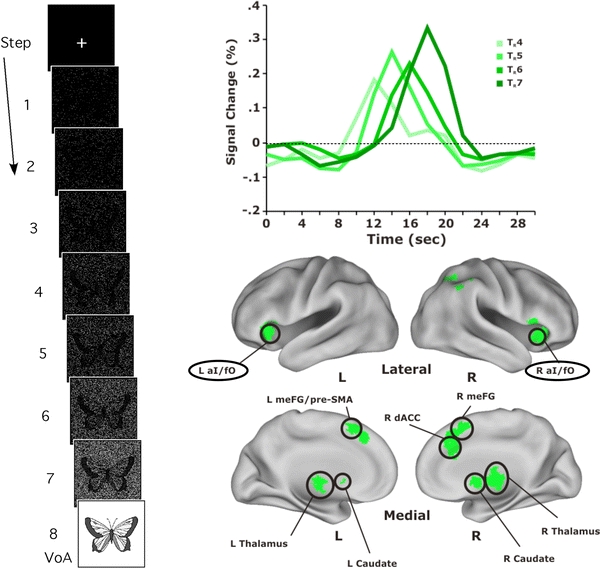Fig. 4.

In an extended reveal paradigm, BOLD time course activity in bilateral anterior insula (aI) responds transiently at the moment of recognition. Objects were revealed from a mask of noise in 2 s steps and subjects made a button press when they could identify the object. At the end trial VoA (verification of accuracy) stage, the picture was fully revealed and subjects were asked to indicate by button press whether they had correctly identified the item as it was being revealed. Average time courses are depicted for a set of regions that showed baseline activity until subjects responded that they recognized an object being unmasked from a noise field. The activity was time-locked to the subjects’ response, resulting in a gradual shift in the onset depending upon what “step” or “reveal stage (TR4, 5, 6, 7)” the subject recognized the item. Adapted from Journal of Neuroscience (Ploran et al. 2007). Copyright (2007) with permission from the Society for Neuroscience
